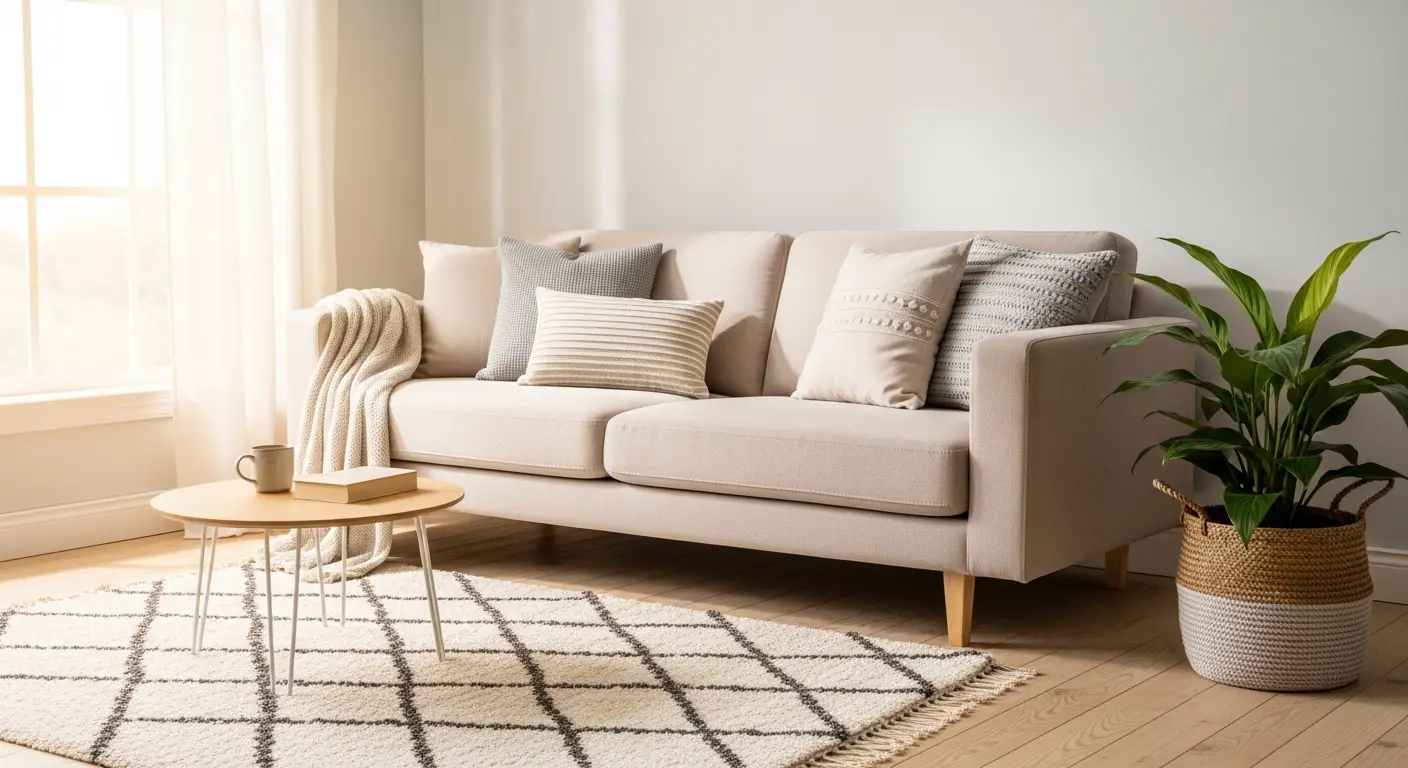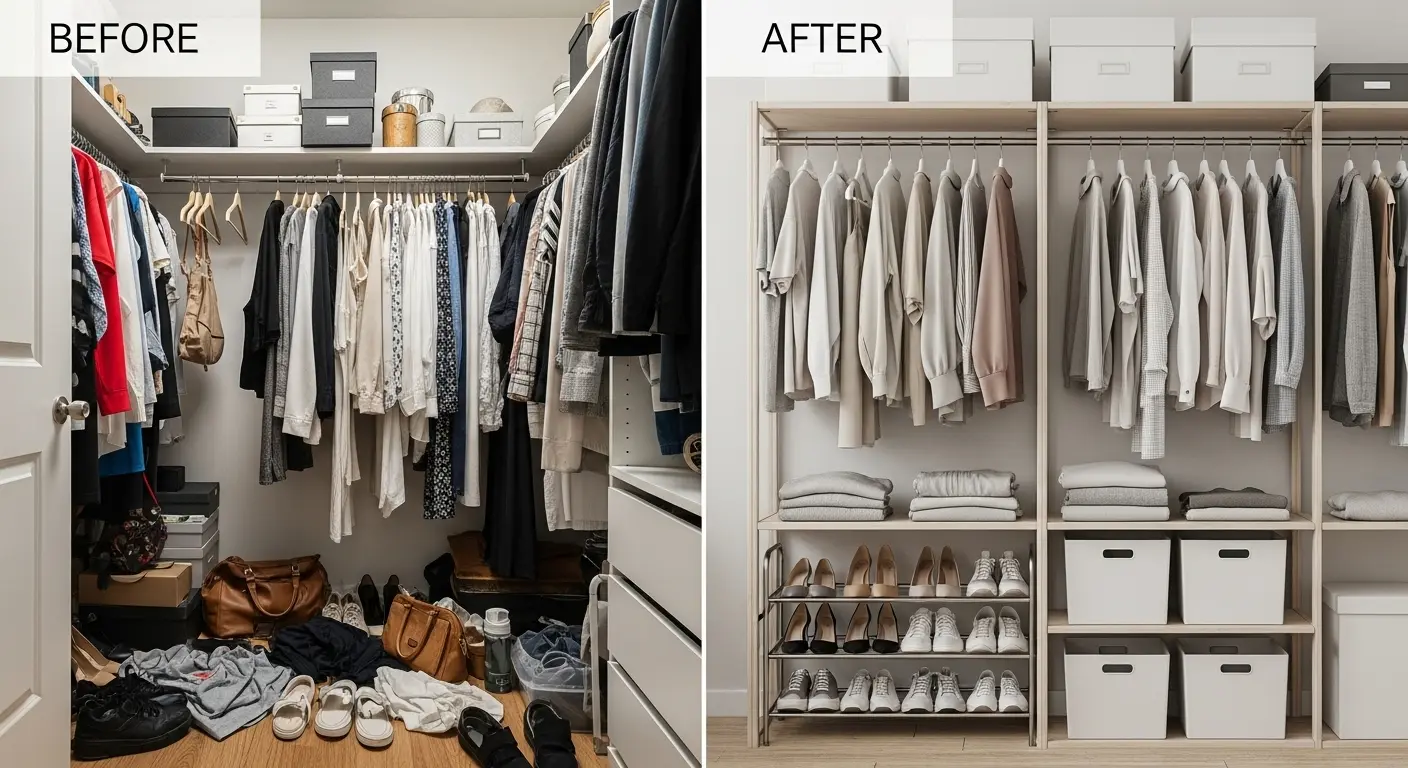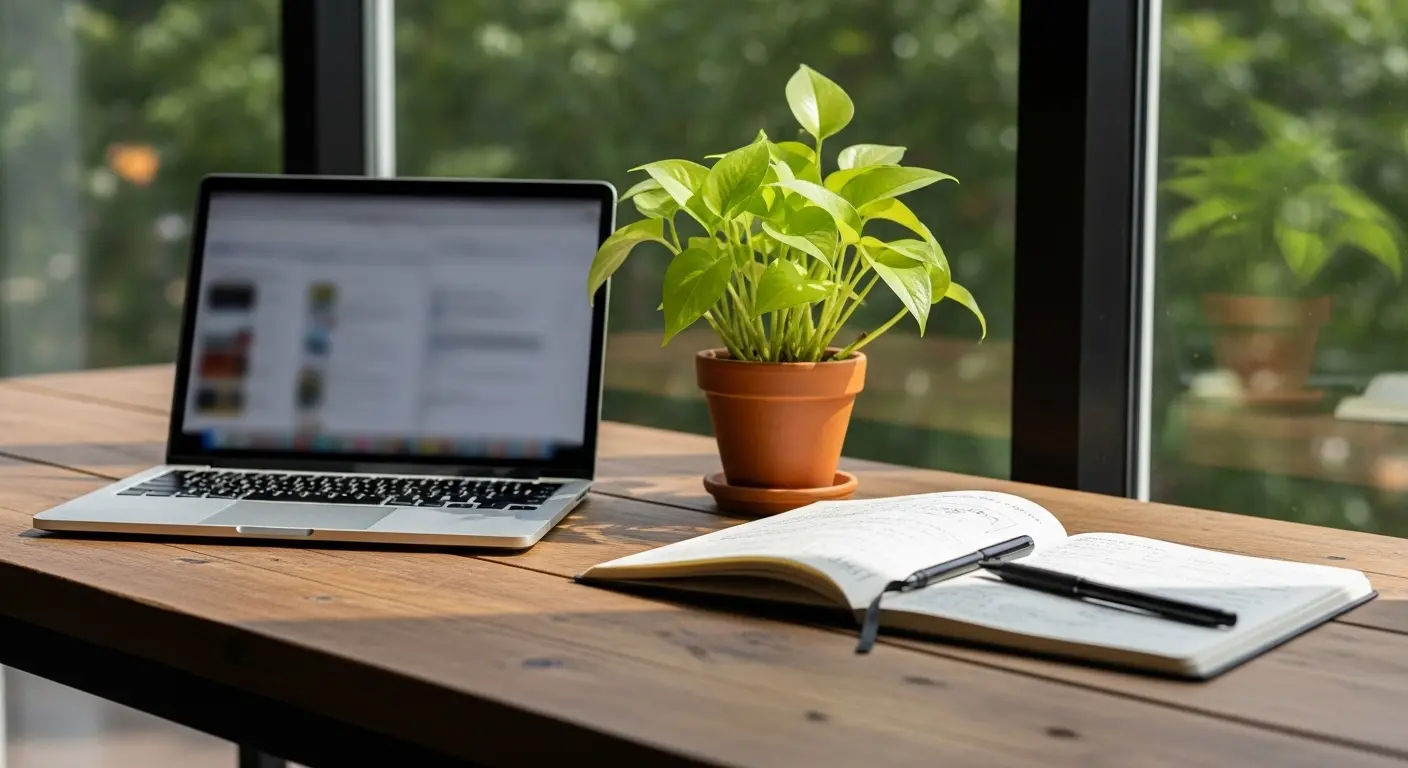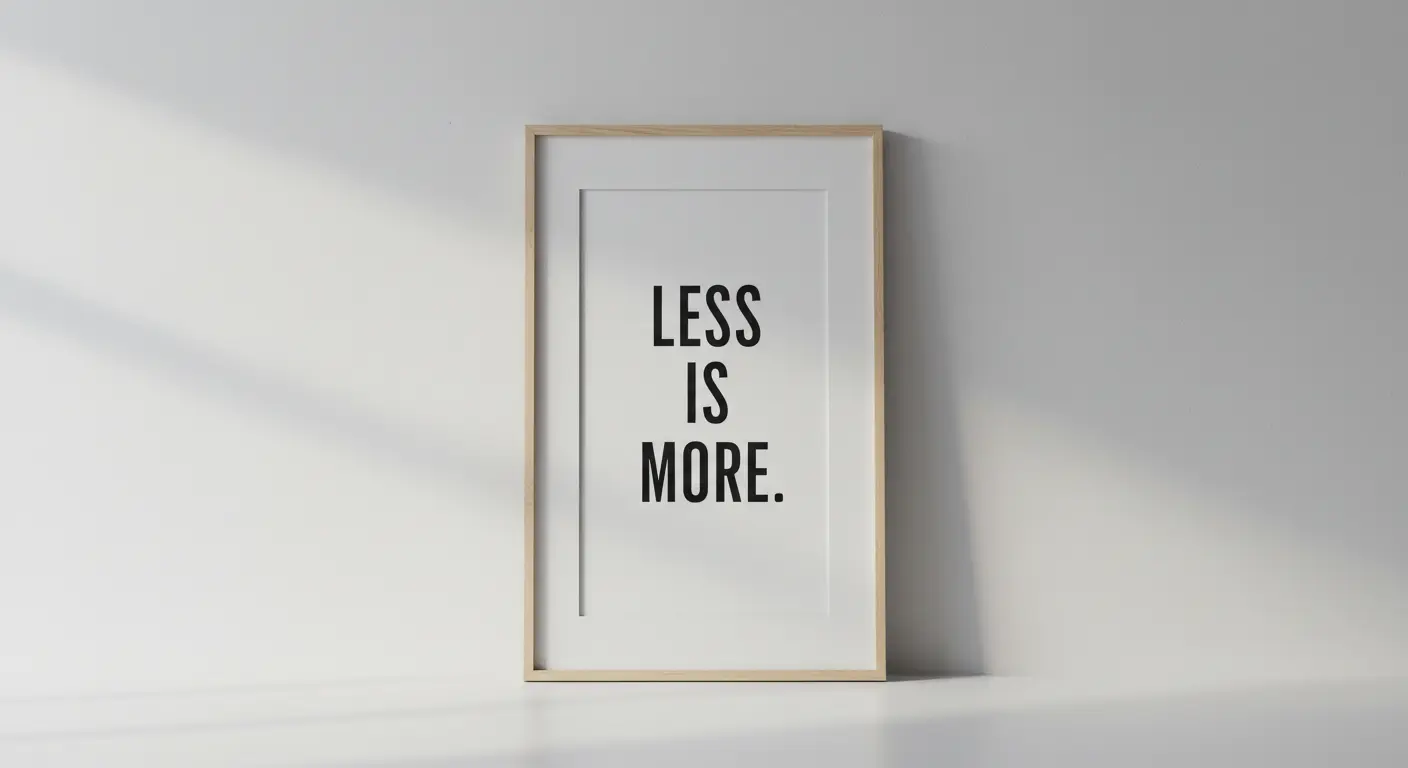
How to start a minimalist lifestyle from scratch can seem challenging when we’re surrounded by clutter, distractions, and a fast-paced routine. But what if the answer to more lightness, purpose, and well-being is precisely having less?
If you feel you need a real change, this article will guide you with simple and practical steps to begin your journey into minimalism — transforming chaos into clarity, and excess into freedom.
What Is a Minimalist Lifestyle?
Origin and Philosophy of Minimalism
The minimalist lifestyle goes far beyond a white house with few pieces of furniture — it begins as a philosophy that invites reflection: what is truly essential for living well?
Inspired by artistic, cultural, and spiritual movements, minimalism proposes a simpler life focused on what truly holds value. Contrary to what many think, it’s not about deprivation, but rather freedom of choice.
By adopting minimalism as a lifestyle, you start to realize that fewer things mean fewer worries. It’s a way to align your decisions with what matters — whether in what you consume, keep, think, or feel.
Benefits of a Minimalist Life
Living minimally directly impacts various areas of life:
- 🧘 Less stress and more mental clarity: Simpler environments and routines reduce visual and emotional overload.
- 💸 Financial savings and awareness: You begin to consume intentionally, avoiding impulse purchases.
- 🕰 More time and freedom: Fewer distractions mean more focus on what makes you feel good.
- 🌱 Natural sustainability: By consuming less, you also reduce your environmental impact.
- 💡 Purpose and authenticity: Your choices come to reflect who you are, not what the world expects.
When applied well, minimalism transforms how you live — not just where you live, but how you think and feel.
Why Starting from Scratch Can Be Liberating
The Problem of Clutter
We live in a culture that encourages accumulation — of objects, tasks, goals, and even feelings. We buy things we don’t need, keep clothes we don’t wear, accumulate papers, files, memories, and distractions. Over time, this excess occupies not only our physical spaces but also our minds.
The result? A fatigue that seems to have no clear origin, constant anxiety, and a feeling of always “chasing after” something, even if you don’t know what. Clutter traps us in a cycle of disorder, consumption, and silent dissatisfaction.
The Value of Conscious Detachment
Starting a minimalist lifestyle from scratch is like pressing the “reset” button on areas of your life that need more lightness. It’s an invitation to look around and within yourself and ask: does this truly make me feel good? Does this represent who I am today?
Conscious detachment doesn’t mean throwing everything away. It means making choices with intention. It’s about keeping what serves you, represents you, and contributes to your peace. The rest, with care and respect, can follow the path of donation, disposal, or transformation.
By starting from scratch, you free yourself from the pressure to keep what no longer makes sense. You gain physical, mental, and emotional space to build a lighter, more fluid routine connected to your true values.
Step-by-Step to Start a Minimalist Lifestyle
1. Reflect on Your Values and Priorities
Before any practical action, it’s important to understand why you want to live with less. What are you seeking? More time? Peace? Organization? What excess bothers you the most?
Minimalism isn’t a one-size-fits-all formula. It needs to make sense for you. By identifying your values and priorities, you start creating a solid foundation to make more intentional choices — from what you keep at home to how you organize your days.
2. Start Small: One Room at a Time
Trying to change everything at once can be exhausting and even discouraging. That’s why start small. Choose a drawer, a shelf, or a single room. The important thing is to take the first step.
An effective technique is the “reverse box”: take everything out of a space and only put back what you truly use and love. Another approach is the 30-day challenge, where you eliminate one item per day. Gradually, you’ll realize how liberating it is to create space around you — and within you.

3. Reevaluate Your Consumption Habits
Adopting a minimalist lifestyle requires a new relationship with consumption. Before each purchase, ask yourself:
- Do I really need this?
- Will it add value to my life?
- Is it quality, or just a momentary impulse?
A tip is to use a “waiting list” for purchases: write down the item and wait 30 days. If after that time it still makes sense, it might be worth it. Otherwise, you save money, space, and energy.
4. Digitize, Simplify, and Organize
Minimalism also applies to the digital world. Delete unnecessary files, clean your inbox, organize photos, and remove apps you don’t use.
Fewer notifications and distractions create more mental clarity and focus on what truly matters. It’s also worth simplifying schedules and commitments, prioritizing what nourishes and benefits you.

5. Create a Simple and Meaningful Routine
Minimalist routines aren’t rigid but rather light and intentional. Think of moments where you can slow down — savoring a coffee calmly, meditating, walking in silence, writing in a journal.
Organize your day with breathing spaces. Eliminate unnecessary tasks. Reduce external noise. Sometimes, transformation begins with small gestures: a calmer morning, a phone-free night, a day with fewer demands and more presence.
What to Avoid at the Start of Your Minimalist Journey
Common Mistakes When Starting
When discovering minimalism, it’s natural to feel excited and want to change everything at once. But this impulse can become a trap. Trying to “reset” your home in a single weekend or getting rid of important items under pressure can cause frustration, regret, or even a sense of failure.
Another common mistake is associating minimalism with the perfect aesthetics seen on social media — white, empty, lifeless spaces. True minimalism doesn’t have a single form. It should reflect your personality, needs, and reality.
Comparing your process to others’ can also be counterproductive. Each journey is unique. What works for one may not work for you — and that’s perfectly okay.
How to Maintain Balance Without Guilt
Minimalism isn’t about perfection; it’s about intention. If at some point you feel the urge to keep something that still holds emotional value, keep it. If you feel it’s not yet time to let go of certain items, respect your pace. The path is made with awareness, not guilt.
Along the journey, you may take a step back at times, rethink choices, and adjust your course. That’s part of the process. The important thing is to maintain clarity of purpose: living with more lightness, less excess, and more meaning.
Adopting a minimalist lifestyle is a continuous construction — and the kinder you are with the process, the more natural and sustainable it becomes.

Real Stories and Inspirations to Start Today
Starting a minimalist lifestyle doesn’t require drastic changes or big investments — often, it all begins with a small gesture. Real stories show that transformation happens gradually but generates profound and lasting impacts.
A reader of Minimals Vibe shared that it all started with a simple wardrobe. Realizing she always wore the same pieces, she decided to do a “conscious detachment” and created her capsule wardrobe. The result? More practicality, less time getting ready, and clearer choices.
Another example comes from a couple living in a 430 sq ft (40 m²) apartment who felt their space was always cluttered. By applying minimalism to each room — eliminating excess, keeping only functional items, and rethinking furniture arrangement — their home transformed into a calm and cozy refuge.
Inspiration can also come from content that sparks this change. Books like Essentialism (Greg McKeown) and Less Is More (Francine Jay), documentaries like Minimalism: A Documentary About the Important Things (Netflix), and profiles on Instagram and Pinterest demonstrate in practice how minimalism can be light, beautiful, and achievable.
👉 For more inspiration, check out the documentary Minimalism: A Documentary About the Important Things on Netflix
The idea is not to copy ready-made models, but to find your own way to live with less and more intention. And the best time to start is now — with what you have, where you are, and however possible today.
Conclusion
Starting a minimalist lifestyle from scratch is, above all, an invitation to live more consciously. It’s not about having a perfect home or eliminating everything overnight — but about making choices aligned with who you are and what truly matters.
By taking the first step toward a lighter life, you open space for what is essential: peace, time, well-being, and authenticity. And the more you practice, the more natural this way of living becomes.
How about starting now? Choose a small area to simplify, thoughtfully evaluate what surrounds you, and remember: every item you let go of can create room for something much more valuable to enter.
If this content resonated with you, share it with someone who also wants to live with more purpose. And keep exploring Minimals Vibe — here, every detail is designed to inspire you to live with less excess and more intention.
👉 Also check out: 10 Habits of Minimalist People You Can Adopt Today
